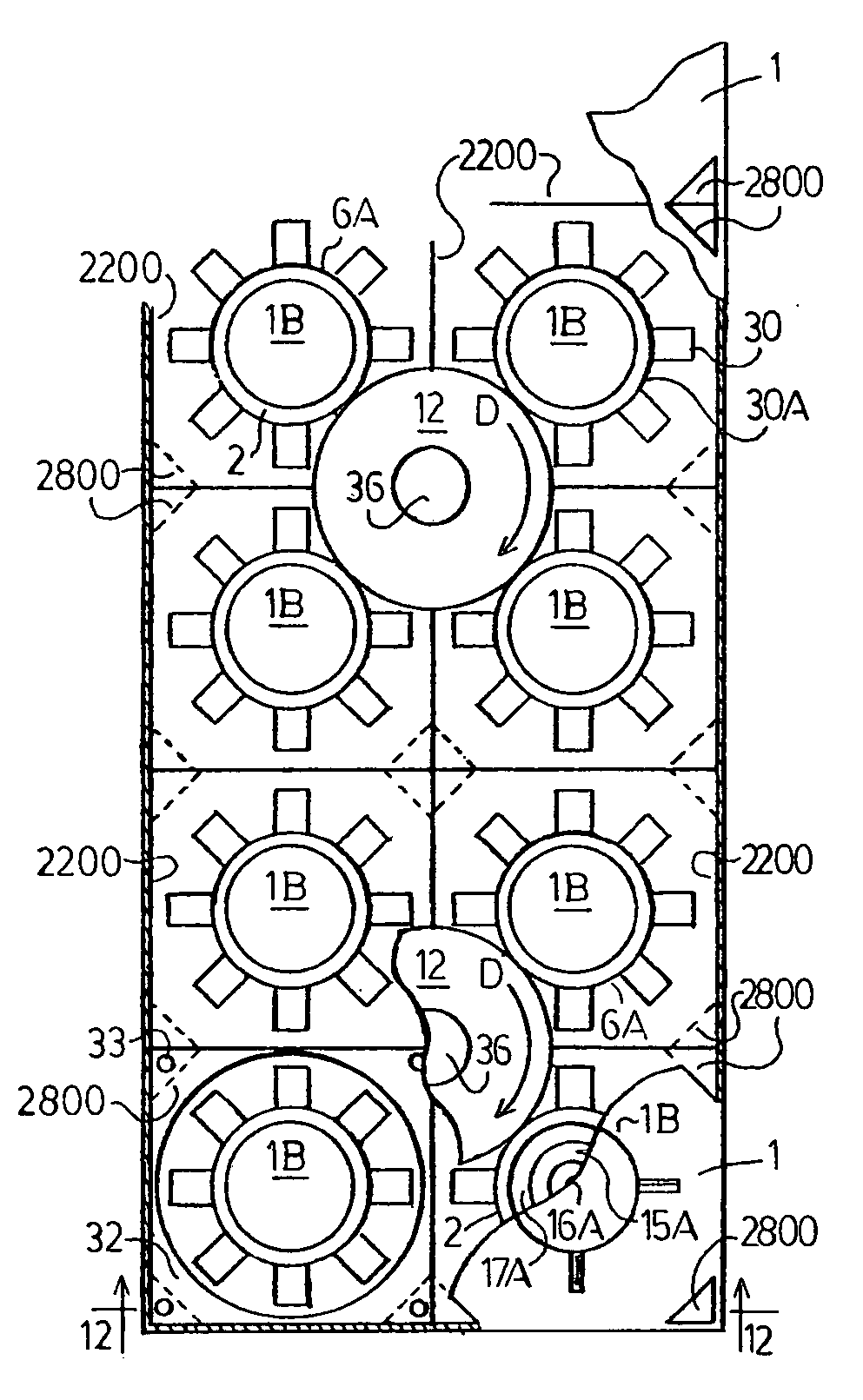Motion fuel cell
a technology of motor fuel cell and fuel cell, which is applied in the direction of fuel cell, fuel cell auxilary, electrical apparatus, etc., can solve the problems of inability to reform fuel, low energy density of pure hydrogen, and inability to achieve on-board reforming, etc., and achieve excellent water management and optimal reactant gas diffusion performance.
- Summary
- Abstract
- Description
- Claims
- Application Information
AI Technical Summary
Benefits of technology
Problems solved by technology
Method used
Image
Examples
Embodiment Construction
[0075] In referring to first 3 drawing pages (numbered: 1 of 6, 2 of 6 and 3 of 6), and in particular to FIGS. 1 and 2; the stationary main structure 1 is the structural support and outer wall of the system. The stationary structure 1, supports (in a fixed position) the fuel and cooling delivery bar (or FC bar 1A), and the end manifold units 1B and 1C which are the connected end portions and part of the said FC bar 1A. The extended stationary structure 1, in addition, supports a greater plurality of (FC bar 1A, 1B and 1C) fuel cell units; including a plurality of powered gear systems 12, which engage the rotary drive mechanism of each fuel cell unit.
[0076]FIG. 1 is taken along lines 1-1 in FIG. 2, and is a top view (relative to FIG. 2) of the main manifold 1B; comprising: the fuel-reactant, or fuel (F), entry valve 15; and fuel exit valve 16; and the coolant-medium, or coolant (C), entry valve 17; and coolant (C) exit valve 18; and the concentric chambers of each, respectively, 15A...
PUM
| Property | Measurement | Unit |
|---|---|---|
| pressures | aaaaa | aaaaa |
| current | aaaaa | aaaaa |
| motion-movement | aaaaa | aaaaa |
Abstract
Description
Claims
Application Information
 Login to View More
Login to View More - R&D
- Intellectual Property
- Life Sciences
- Materials
- Tech Scout
- Unparalleled Data Quality
- Higher Quality Content
- 60% Fewer Hallucinations
Browse by: Latest US Patents, China's latest patents, Technical Efficacy Thesaurus, Application Domain, Technology Topic, Popular Technical Reports.
© 2025 PatSnap. All rights reserved.Legal|Privacy policy|Modern Slavery Act Transparency Statement|Sitemap|About US| Contact US: help@patsnap.com



